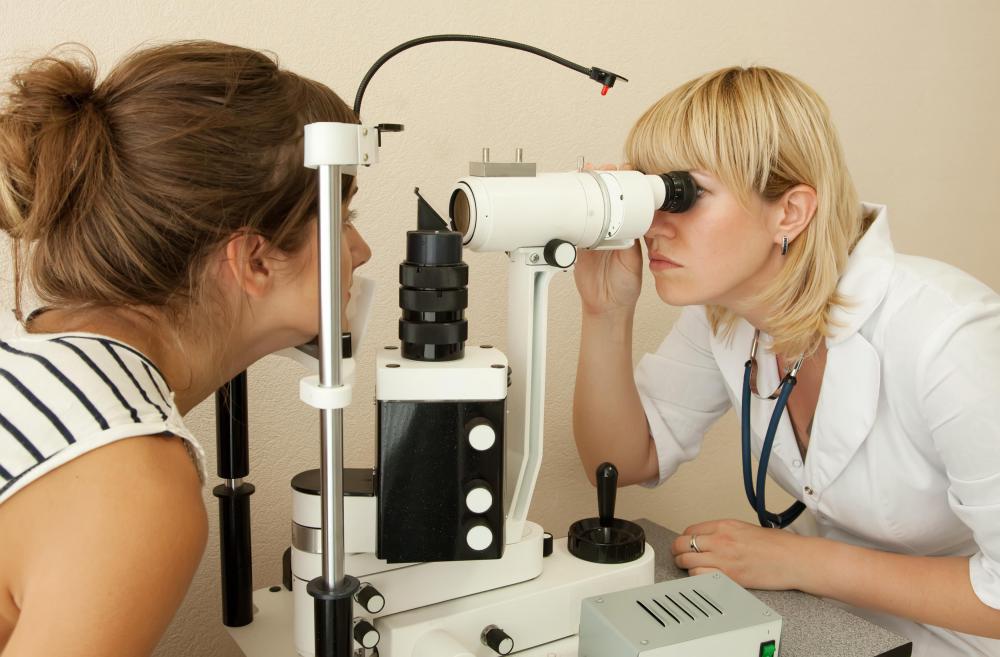At TheHealthBoard, we're committed to delivering accurate, trustworthy information. Our expert-authored content is rigorously fact-checked and sourced from credible authorities. Discover how we uphold the highest standards in providing you with reliable knowledge.
How Do I Choose the Best Non-Invasive Glucose Meter?
A non-invasive glucose meter is a relatively new piece of technology that takes glucose measurements without any finger pricking or skin pricking. The thought of pricking one’s finger several times a day, or even once, makes many diabetics jittery, so a non-invasive glucose meter can be highly desirable. When choosing a non-invasive glucose meter, check the effectiveness of the unit, its warm-up time, whether the model is continuous and whether the unit is able to measure other things that may be a problem for diabetes sufferers, such as blood pressure.
Unfortunately, non-invasive glucose testing technology has still not become mainstream, despite the promise of early models. The effectiveness of the technology is one of the top concerns for doctors and users. Check to see if the unit is backed by any organizations, such as the U.S. Food and Drug Administration (FDA), or major medical foundations. Read up on the unit and find real-customer testimonials to see if the unit has proved effective in accurately measuring glucose. Many doctors suggest using your regular glucose meter simultaneously with the non-invasive meter to ensure you receive accurate readings, at least until you're confident about the unit's accuracy.

Many non-invasive glucose meters have a warm-up time before they are able to measure glucose. This means you will have to ensure you turn on the non-invasive glucose meter in plenty of time before you need to test your glucose; this warm-up time can vary from minutes to hours, depending on the unit. Check the packaging to find out the warm-up time, if there is any. A glucose meter that requires no warm-up time -- or just a matter of minutes -- is best.

A continuous glucose meter is not new technology. It refers to a meter that continuously monitors one's glucose levels throughout the day, and it is most commonly seen with surgically implanted glucose meters. A model that offers continuous monitoring of your glucose is better than one that only monitors your glucose manually. Continuous monitoring ensures your glucose is never too high or low and that you never miss testing your glucose.

Testing glucose, while the primary concern, is just one thing diabetes sufferers have to check. Blood pressure is often a common concern, and many blood glucose meters also have technology to measure these other areas of concern. Getting a non-invasive glucose meter that is able to check more than just blood glucose will prove to be more useful than one that just monitors glucose.
AS FEATURED ON:
AS FEATURED ON:

















Discussion Comments
Just a few hours ago, I got a phone call from a medical supply company in Florida saying I had asked about their newest meter. They told me that their newest meter is 100 percent non-invasive, and is also 100 percent compatible with most insulin pumps that can receive BG readings by wireless radio communication. I'll find out hopefully next week.
They told me they're sending me one of these 100 percent non-invasive meters and I should have it probably by the middle of next week. I wish I could remember the web address, but I had nothing to write it on, and couldn't remember it by the time I turned on my computer.
All this advice is very good, except for one important thing: there are no non-invasive blood glucose meters on the market! Many people claim to have "invented" one, but the only one ever marketed was pulled off the market ten years ago because it damaged skin. So you shouldn't worry too much about reading the packaging material carefully!
Post your comments